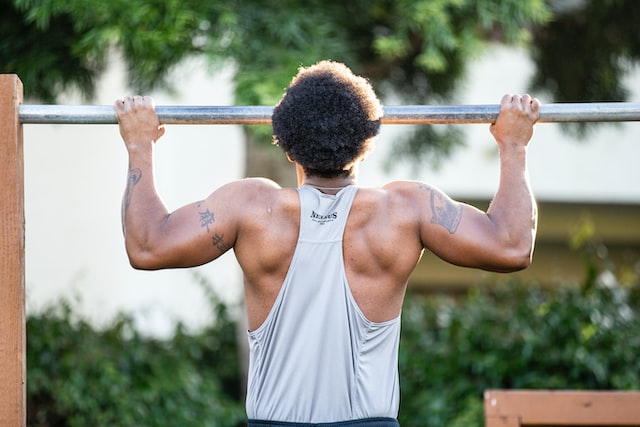Are you curious about how many pull-ups the average person can do? Pull-ups are a great exercise for building upper body strength and are a staple in many calisthenics routines. In this article, we’ll dive into the research on pull-up performance and give you some tips for improving your pull-up game. So, get ready to flex those biceps and let’s get started!
What is the Average Person?
Before diving into pull-up performance, it’s important to define what we mean by the “average person.” When it comes to pull-ups, there are several factors that can impact performance, including age, gender, weight, and fitness level.
Age can play a significant role in pull-up performance. As we get older, our muscle mass and strength tend to decrease, which can make pull-ups more challenging. Gender is another factor to consider. Men generally have more upper body strength than women, which can give them an advantage when it comes to pull-up performance.
Weight can also impact pull-up performance. Pull-ups require lifting your entire body weight, so individuals who are overweight may struggle to perform them. However, losing weight can help improve pull-up performance.
Finally, fitness level is a crucial factor in pull-up performance. Individuals who regularly engage in strength training and calisthenics exercises are likely to perform better on pull-ups than those who don’t exercise regularly.
Overall, when we talk about the “average person” in terms of pull-up performance, we’re referring to someone who is of average weight and fitness level, and who falls within the typical age range for adults (18-65 years old).
How Many Pull-Ups Can The Average Person Do?
When it comes to pull-up performance, there’s no one-size-fits-all answer to how many pull-ups the average person can do. However, we can look to research to get a general idea of what to expect.
The average man can do between 0-3 pull-ups, while the average woman can do between 0-1 pull-up. Of course, this is just an average, and individuals who regularly engage in strength training and calisthenics exercises may be able to perform more pull-ups.
It’s also worth noting that factors such as age, weight, and fitness level can impact pull-up performance. Older individuals or those who are overweight may find pull-ups more challenging, while individuals who regularly engage in strength training and calisthenics exercises may be able to perform more pull-ups.
Ultimately, the number of pull-ups you can do will depend on your individual strength and fitness level. However, with consistent training and dedication, you can work towards improving your pull-up performance and reaching your goals.
Improving Your Pull-up Game
Whether you’re a beginner or an experienced fitness enthusiast, there are always ways to improve your pull-up performance. Here are some tips for taking your pull-up game to the next level:
- Start with the basics: If you’re new to pull-ups, start with the basics. Focus on building your upper body strength with exercises like push-ups, bench presses, and rows. Once you feel confident with these exercises, you can move on to assisted pull-ups or negative pull-ups, where you focus on lowering yourself down from the bar slowly.
- Use proper form: When performing pull-ups, it’s important to use proper form. This means keeping your shoulders down and back, engaging your core, and pulling your body up to the bar in a smooth and controlled motion. Avoid swinging your body or using momentum to get yourself up to the bar.
- Train regularly: Consistency is key when it comes to improving your pull-up performance. Try to incorporate pull-ups into your workout routine at least two to three times a week. Start with a few sets of as many reps as you can do with proper form, and gradually increase the number of reps over time.
- Mix it up: Don’t be afraid to mix up your pull-up routine by trying different variations. For instance, you can try wide-grip pull-ups, chin-ups, or pull-ups with a weighted vest to challenge yourself and target different muscle groups.
- Stay patient: Improving your pull-up performance takes time and patience. Don’t get discouraged if you don’t see progress right away. With consistent training and dedication, you’ll eventually see improvement in your pull-up performance.
By following these tips, you’ll be well on your way to improving your pull-up game and building a stronger upper body.
Final Thoughts
Pull ups are a challenging yet rewarding exercise that can help build upper body strength and improve overall fitness. While the number of pull-ups the average person can do may vary, with consistent training and proper technique, anyone can work towards improving their pull-up performance. Remember to start with the basics, use proper form, train regularly, mix up your routine, and stay patient. By following these tips and staying dedicated to your fitness goals, you’ll be well on your way to mastering the pull-up and building a stronger, fitter body.






